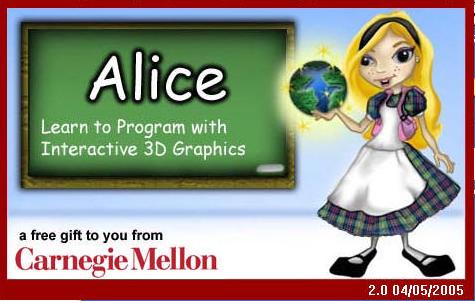
Published: May 19, 2007
By Richard G. Baldwin
File: Alice0135PracticeTest.htm
1. True or False: Alice has both methods and functions.
2. True or False: In Alice, methods return values and functions do not return values.
3. True or False: Only those objects created from the classes in the gallery provide primitive functions.
4. True or False: You can create a new function and attach it to any of the Alice objects.
5. True or False: Alice is a so-called "type insensitive" programming language. Therefore, Alice does not require different kinds of data to be categorized in different ways, technically known as data types.
6. True or False: You cannot do arithmetic with a value of type Number.
7. True or False: The String type might be described as a series of characters that are used to create something that in the non-technical world might be called a label.
8. True or False: The primitive say method requires a single parameter, and it must be type Number.
9. True or False: The world provides a function named toString that can be used for converting data from type Number to type String.
10. True or False: The process of fusing two or more strings into a single String in computer programming jargon is concatenating strings.
11. True or False: Alice does not provide a function that can be used to concatenate strings.
12. True or False: Assume that you have a world containing a Coach object and that you need to create a new function for that object. The steps for creating the new function would be as follows:
This will produce a dialog that allows you to specify several important aspects and to complete the creation of the new function.
Copyright 2007, Richard G. Baldwin.
Faculty and staff of public and private non-profit educational institutions are
granted a license to reproduce and to use this material for purposes consistent
with the teaching process. This license does not extend to commercial
ventures. Otherwise, reproduction in whole or in part in any form or medium
without express written permission from Richard Baldwin is prohibited.
The following image is the splash screen from Alice 2.0, and is the property of the developers of Alice at Carnegie Mellon.

Copyright 2007, Richard G. Baldwin. Faculty and staff of public and private non-profit educational institutions are granted a license to reproduce and to use this material for purposes consistent with the teaching process. This license does not extend to commercial ventures. Otherwise, reproduction in whole or in part in any form or medium without express written permission from Richard Baldwin is prohibited.
The following image is the splash screen from Alice 2.0, and is the property of the developers of Alice at Carnegie Mellon.

-end-